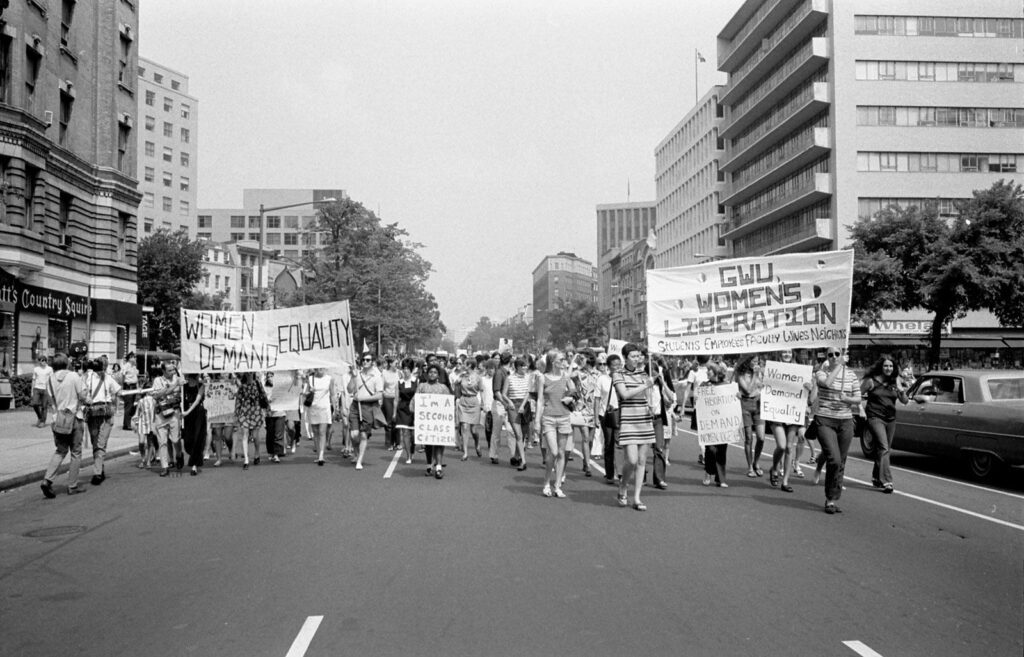The Evolution of the Women’s Rights Movement in the United States
Achievements of the Women’s Rights Movement
Despite internal disagreements within its leadership and among grassroots participants, the women’s rights movement made significant strides in a relatively short timeframe. With the support of the Equal Employment Opportunity Commission (established in 1965), women gained unprecedented access to employment across various sectors of the U.S. economy. Longstanding discriminatory practices were challenged, requiring employers to outline plans to increase the number of women in their workforce. This movement also led to liberalized divorce laws, prohibitions against firing pregnant women, and the establishment of women’s studies programs at colleges and universities.
Furthermore, record numbers of women began to run for and win political office. A landmark moment came in 1972 when Congress passed Title IX of the Higher Education Act, which prohibited sex-based discrimination in educational programs receiving federal funds. This legislation compelled all-male institutions to admit women and mandated the support and funding of women’s athletic teams. The Supreme Court’s 1973 decision in Roe v. Wade legalized abortion, marking another pivotal victory for women’s rights.
The Decline of the Women’s Rights Movement
The gradual decline of the women’s rights movement was exacerbated by the National Organization for Women’s (NOW) intense focus on securing the Equal Rights Amendment (ERA). Influential figures like Bella Abzug, Betty Friedan, and Gloria Steinem were instrumental in passing the ERA in Congress in 1972. However, this momentum sparked a backlash against feminism. Opposition leaders such as Phyllis Schlafly mobilized against the amendment, warning that it would jeopardize traditional values by invalidating state sodomy laws, outlawing single-sex restrooms, legalizing same-sex marriage, and establishing abortion as a constitutional right. Ultimately, the amendment fell three states short of the necessary ratification, which required 38 states within ten years.
Shifts in Focus and Activism
In the 1980s, the failure of the ERA marked a shift in the landscape of organized feminist activity in the United States, as the fervent mobilization of women began to diminish. A prevailing narrative emerged suggesting that the primary objectives of the women’s rights movement had been met. Although NOW continued its advocacy efforts—defending abortion rights, promoting sexual harassment laws, striving for full military equality, and seeking increased federal funding for childcare and anti-violence programs—its focus became increasingly fragmented, and internal conflicts arose.
On college campuses, debates erupted among feminists regarding issues like whether consensual relationships between male professors and female students constituted sexual harassment and whether women’s studies programs were a legitimate academic pursuit. The involvement of women in the military became contentious, with varying opinions on the appropriateness of sending mothers to combat.
Conservative Shifts and Divisions
By the 1990s, the feminist movement, once characterized by radical ideals, began to evolve into forms that included conservative perspectives. The ongoing contention surrounding abortion alienated many women, particularly groups like Feminists for Life, who passionately supported women’s rights but opposed mainstream feminist views on abortion. This divide intensified when Norma McCorvey, the plaintiff in Roe v. Wade, expressed her opposition to abortion on demand in 1998, revealing later that she had been financially incentivized to advocate for anti-abortion organizations before her death in 2017.
Backlash and Challenges Ahead
As the 2000s approached, a backlash against the women’s rights movement cast doubt on the social and economic progress achieved. With rising numbers of single mothers and older divorced women facing poverty, many began to question whether changes such as no-fault divorce and the elimination of alimony truly benefited women. Concerns about young children spending substantial time in daycare sparked debates over maternal responsibilities and federal policies incentivizing working mothers, raising questions about their impact on family structures. Feminists were often targeted as the alleged architects of the negative repercussions stemming from the sexual revolution, despite many critiques arising from women who had leveraged the movement’s advancements to achieve their own success.
In summary, the women’s rights movement in the United States has seen significant achievements, shifts in focus, and internal divisions since its inception. While substantial progress has been made, the struggle for equality, respect, and recognition continues as contemporary feminists navigate new challenges and societal perceptions.


